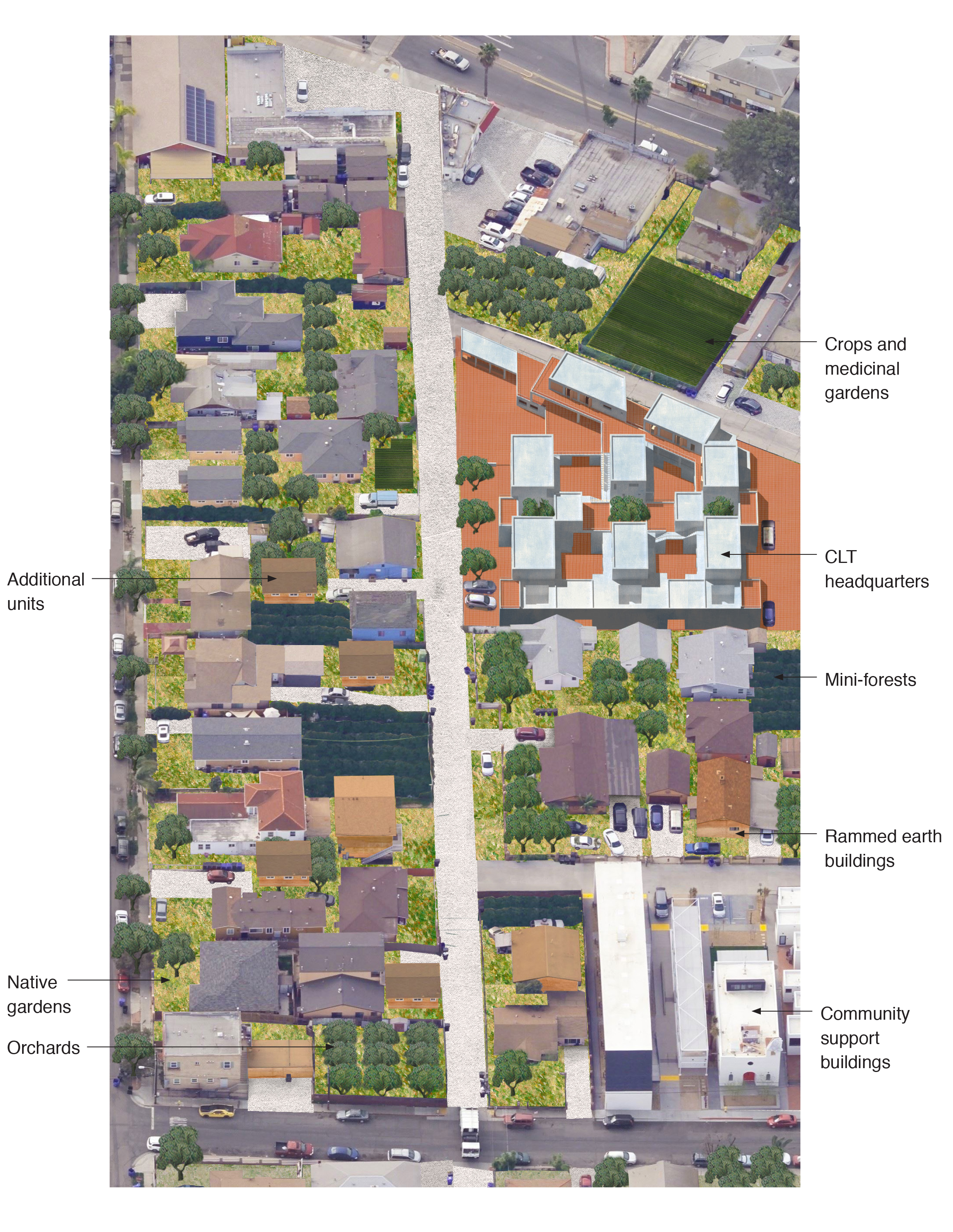The following drawings consist of hypothetical scenarios that show how a resident may experience the overlap between community systems. The drawings show how resident engagement transforms the site, and eventually, the neighborhood.
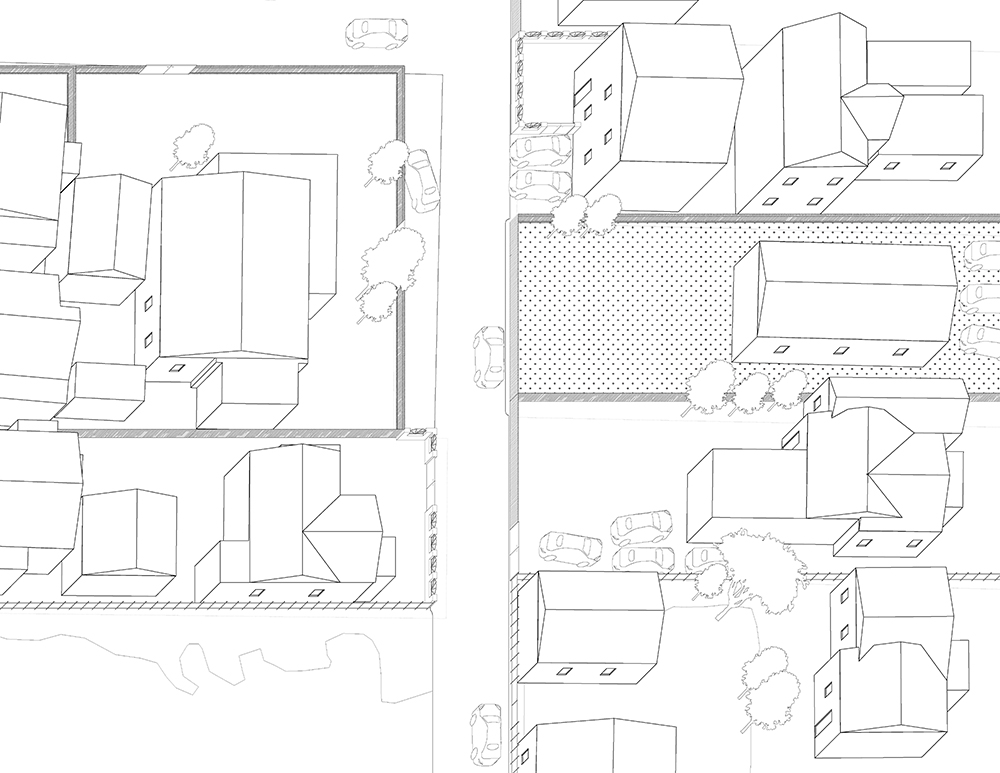
1. Scenario A begins when a San Ysidro resident joins the CLT.
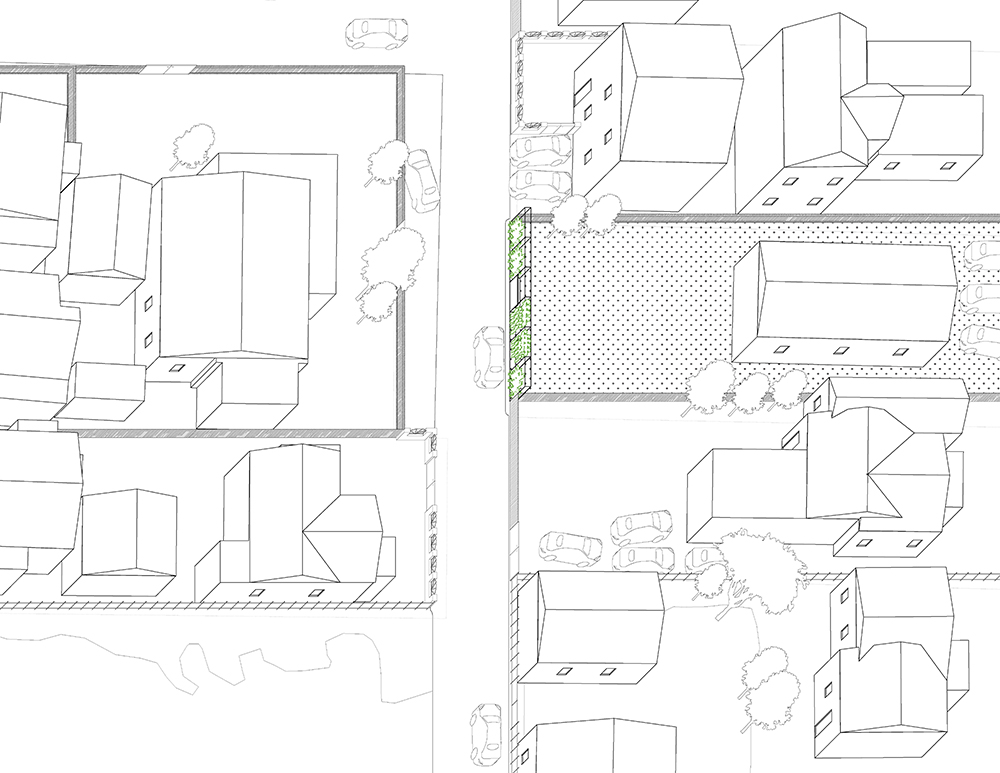
2. To take advantage of their membership, they decide to replace their chain link fence with a hydroponic system. They join the minga botanica and over the course of one or two weekends, the fence is built and the hydroponics are up and running.
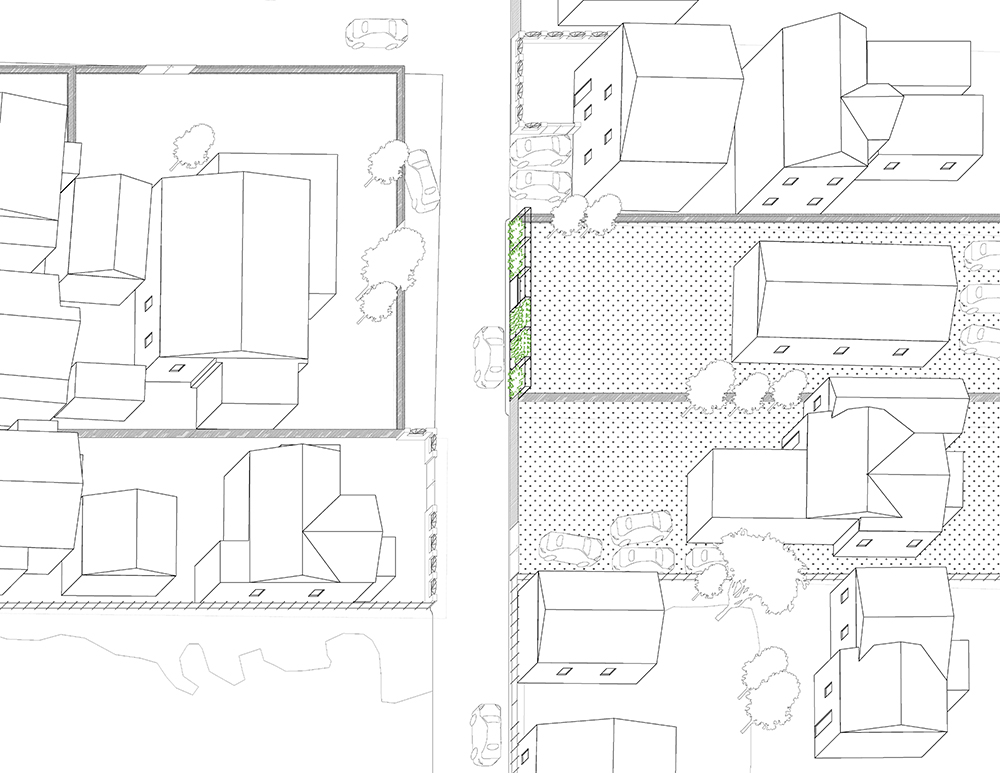
3. Eventually, their next-door neighbor joins the CLT as well.
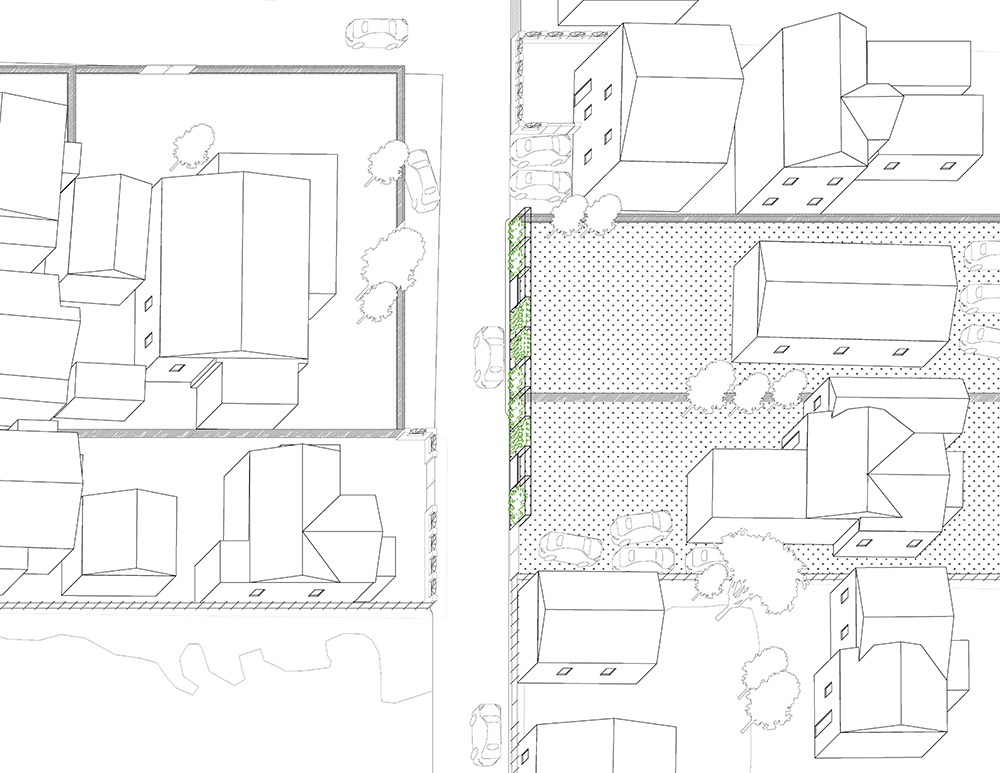
4. Excited by the hydroponic fence next door, they also request help from the minga botanica, and the new fence is installed, creating a continuous and verdant street front along both properties.
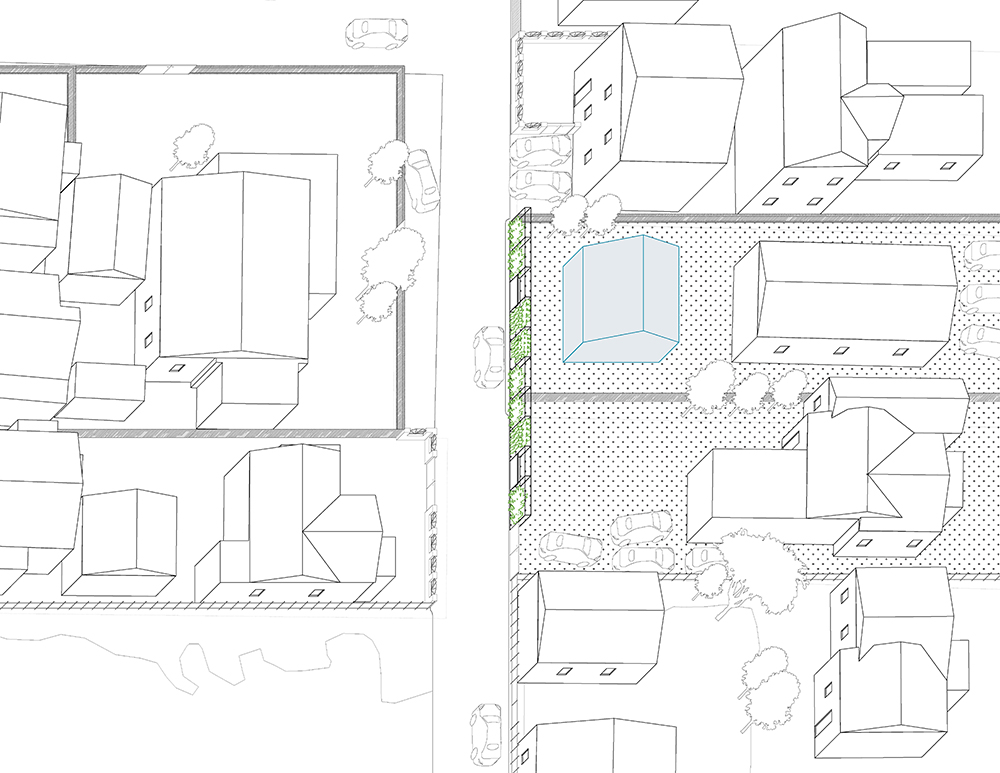
5. Eventually, Neighbor 1 decides to keep working with the CLT to build a rammed-earth unit addition. Over the course of the summer, the minga obrera is busy on the site, building up the rammed earth walls and hosting community build days. They use a design from construction detail standards provided by the CLT.
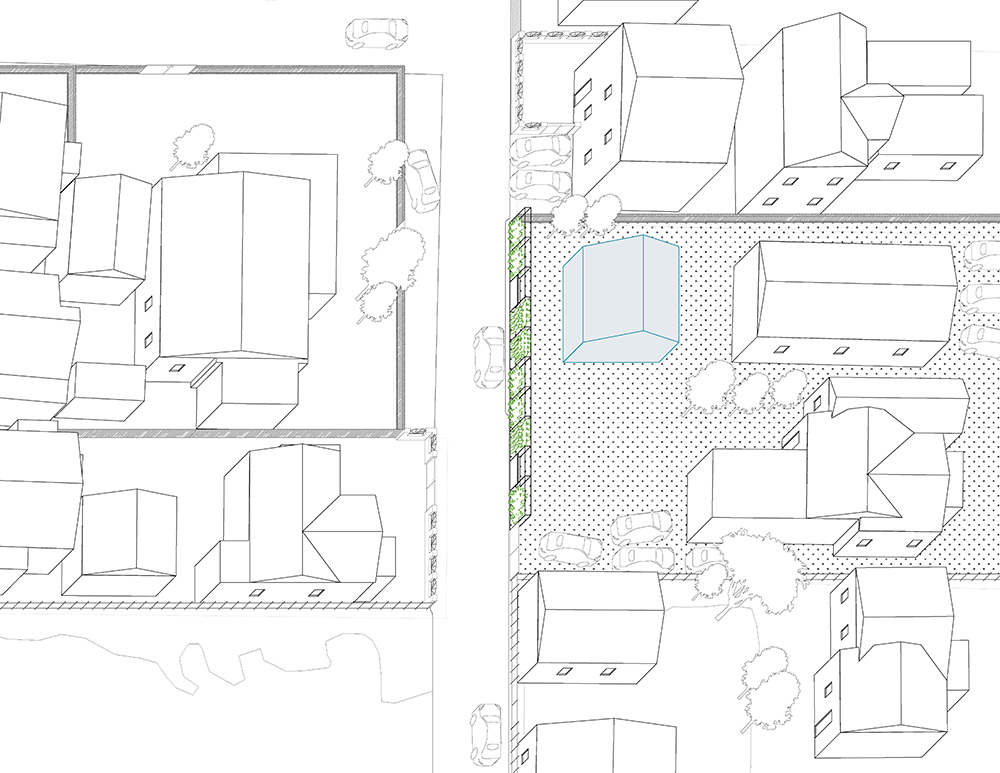
6. After the success of Neighbor 1’s construction project, Neighbor 2 becomes interested as well. They realize, however, that since both of their lots are owned by the CLT, they can request a lot consolidation. In so doing, they can connect their unit additions, ultimately getting more square footage. They take the fence between their properties down and prepare to build something together.
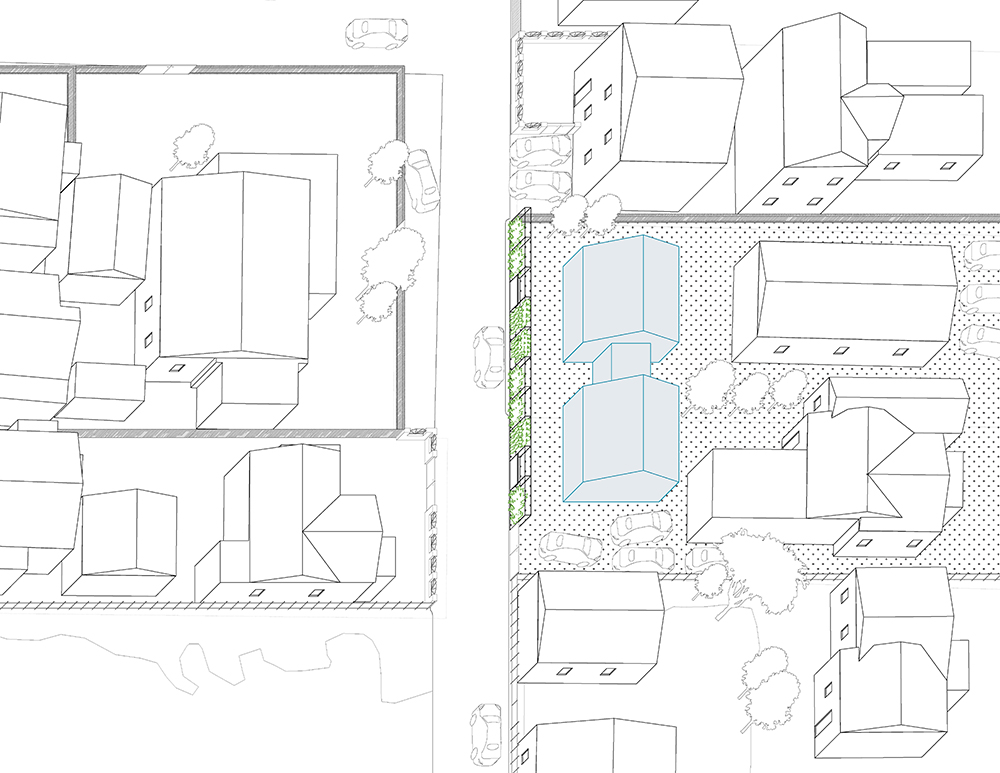
7. The minga obrera returns to the site, building a new unit addition and a shared laundry space that connects to the first structure.
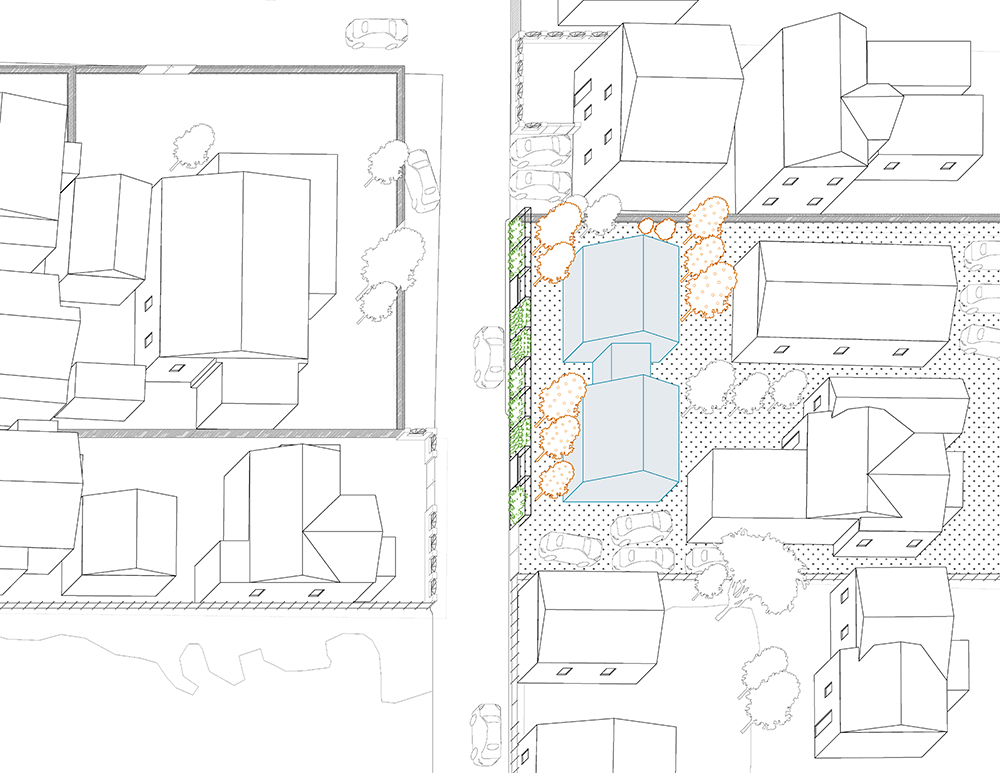
8. After several years, both neighbors are now avid participants of the minga botanica. They eventually request assistance from their fellow members, eventually adding a small orchard to their garden.
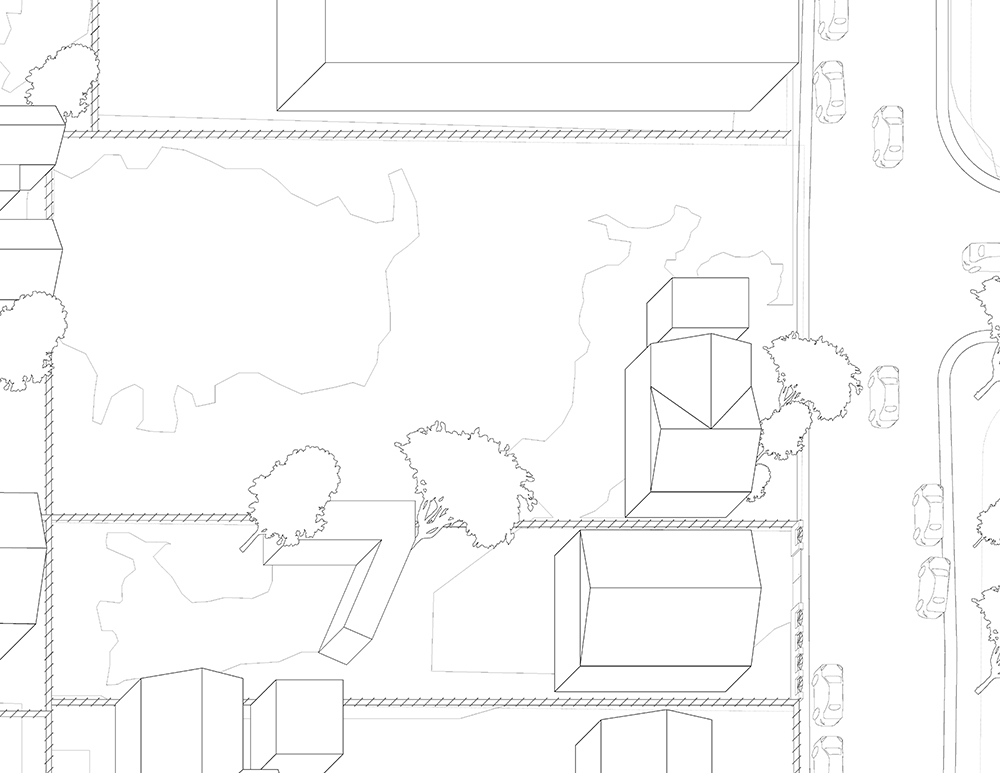
1. Scenario B begins with dormant plots of land.
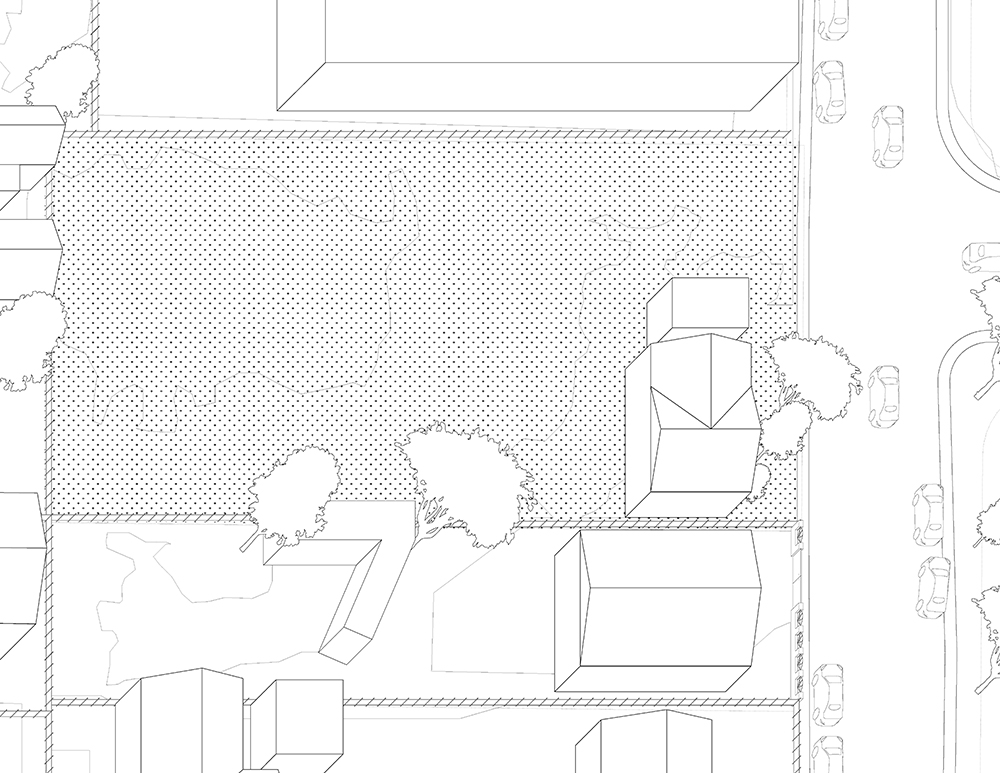
2. The family with the larger lot is the first to join the CLT.
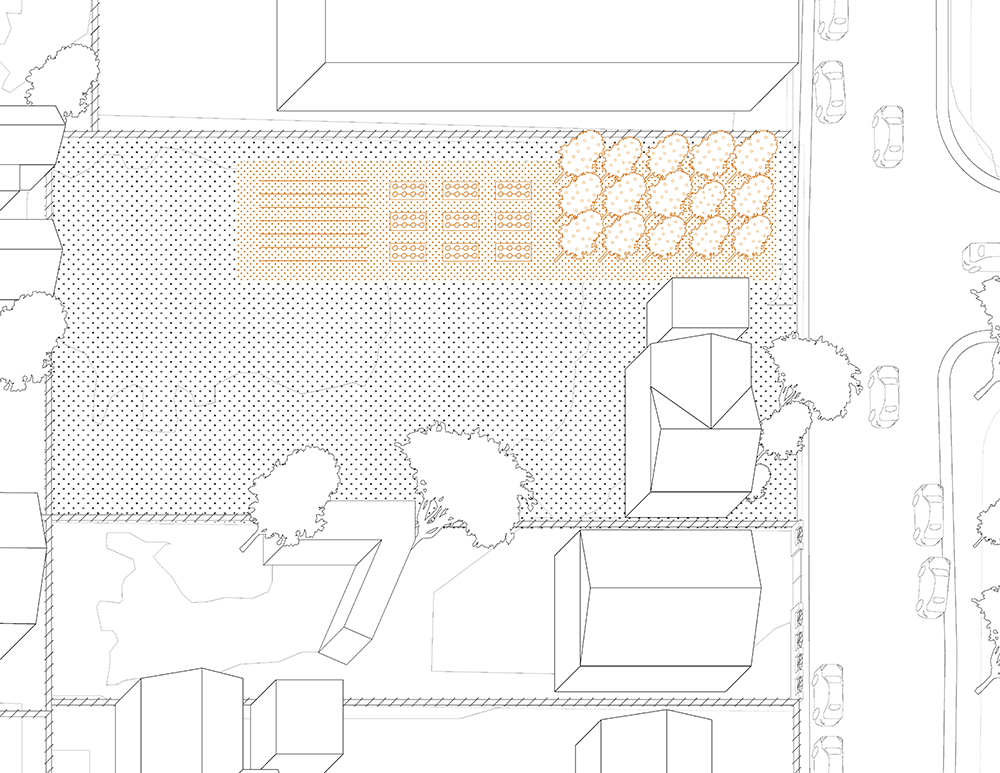
3. In their first season, they work actively with the minga botanica to plant native gardens and fruit trees, both of which are very low-maintenance once established.
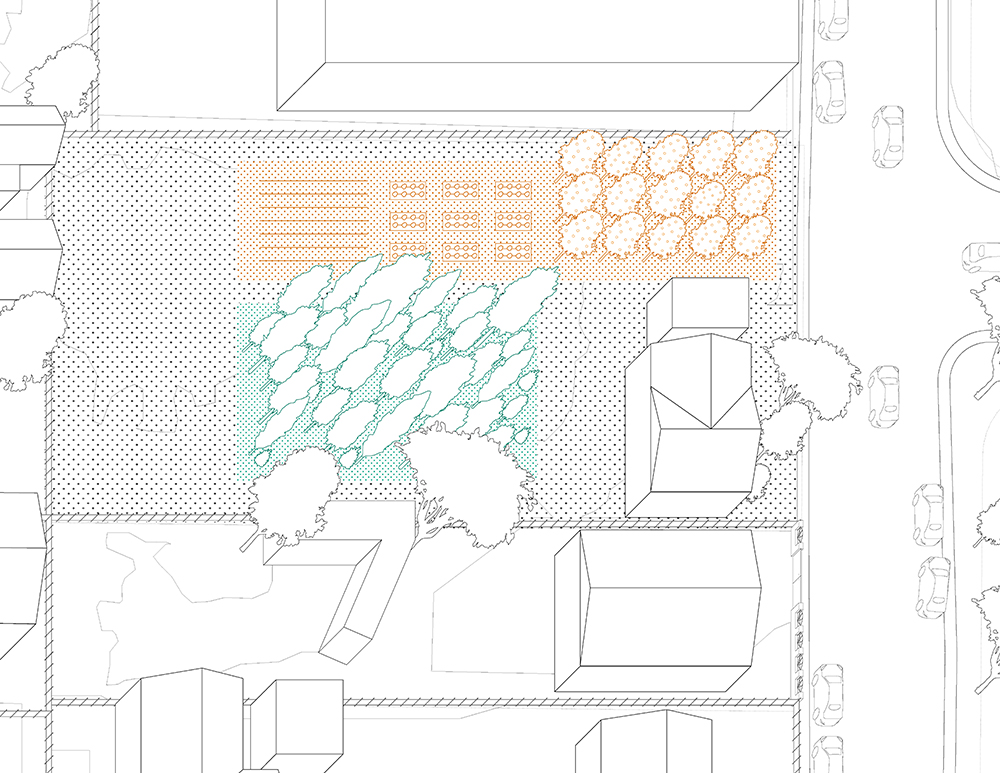
4. These plantings, however, only fill about half of the yard. Expanding their desire to rehabilitate the currently empty ground, they engage the minga botanica and the San Ysidro Planting Corps to plant a mini-forest carbon sink in the backyard. The lush vegetation of the Miyawaki method requires zero maintenance after three years, but it fills the garden with flowers, butterflies, and birdsong.
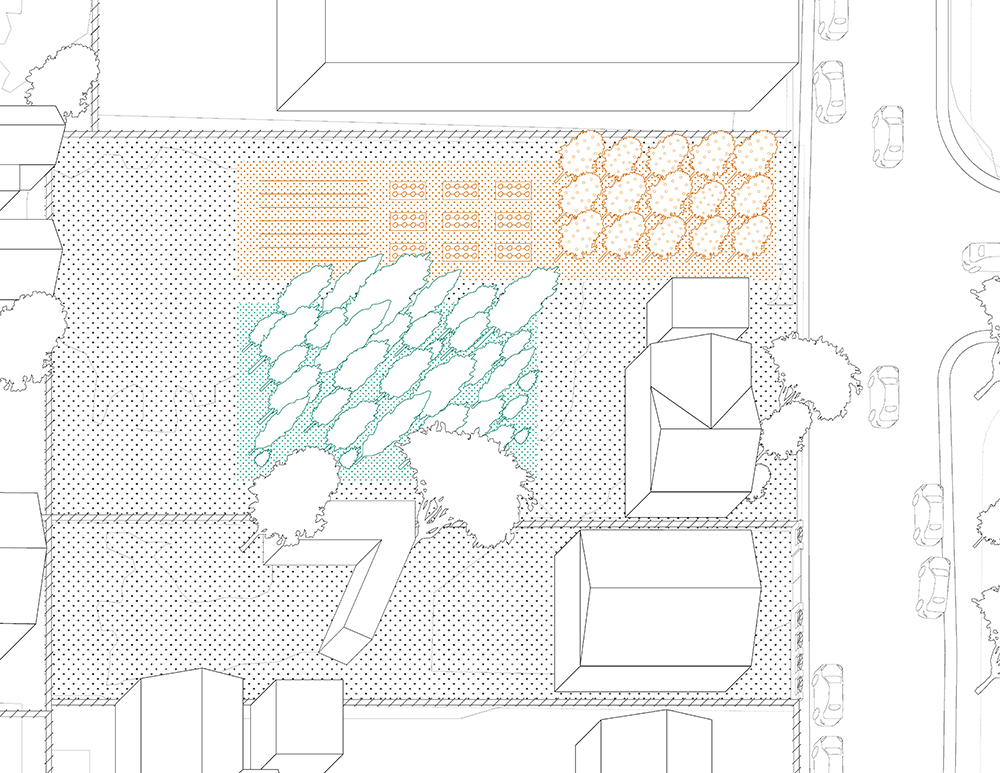
5. After a few years, the neighbor to the south joins the CLT as well. Because both families are low-income, they discuss the possibility of requesting a lot consolidation and working with the CLT to build rental units in the back.
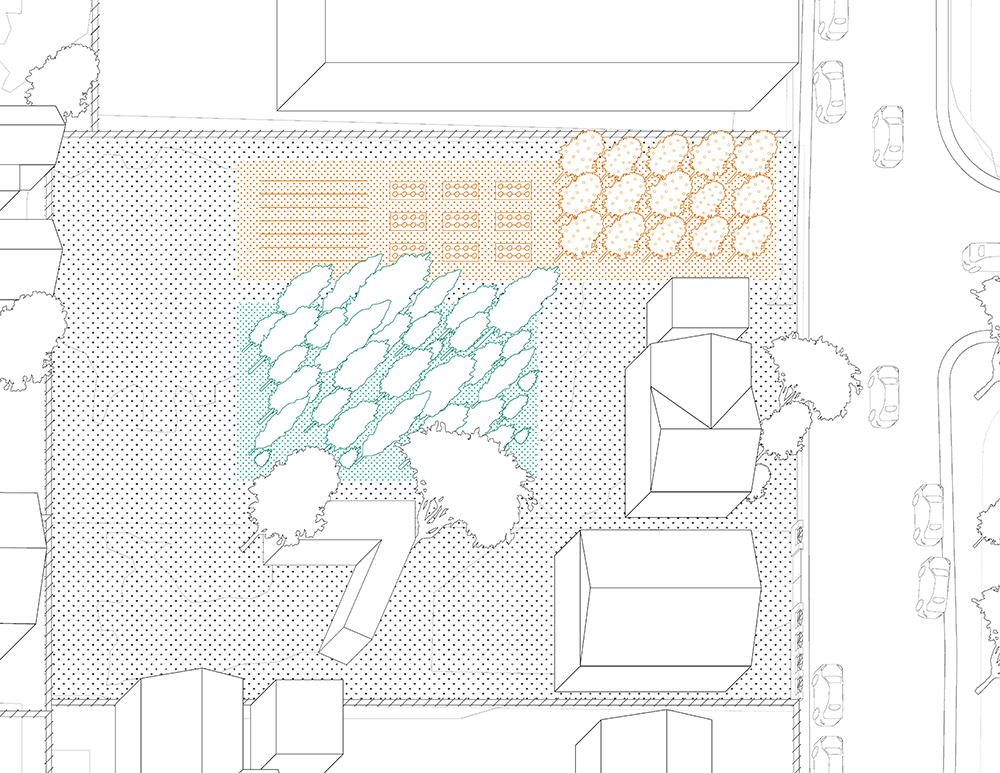
6. With administrative help from the CLT, the families consolidate their lots and remove the fence between them.
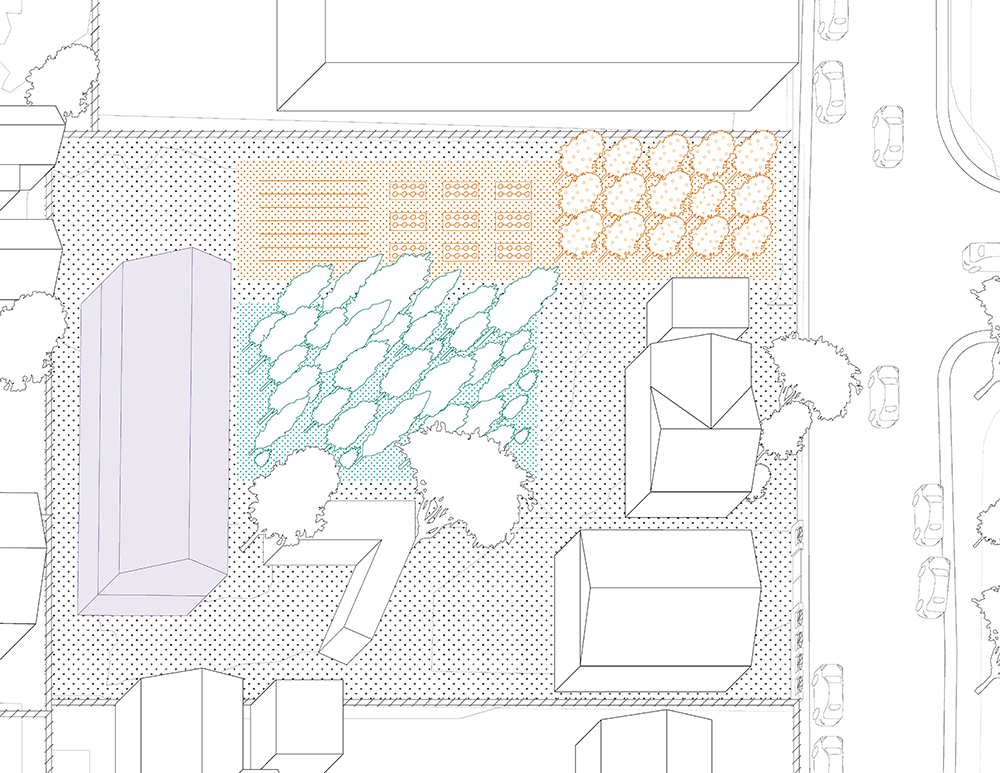
7. They work with the minga obrera and the CLT to build a five-unit structure. Each family rents out two units, receiving a new source of income, and the fifth is rented out by the CLT. The CLT, through a ground-lease, regulates their affordability.
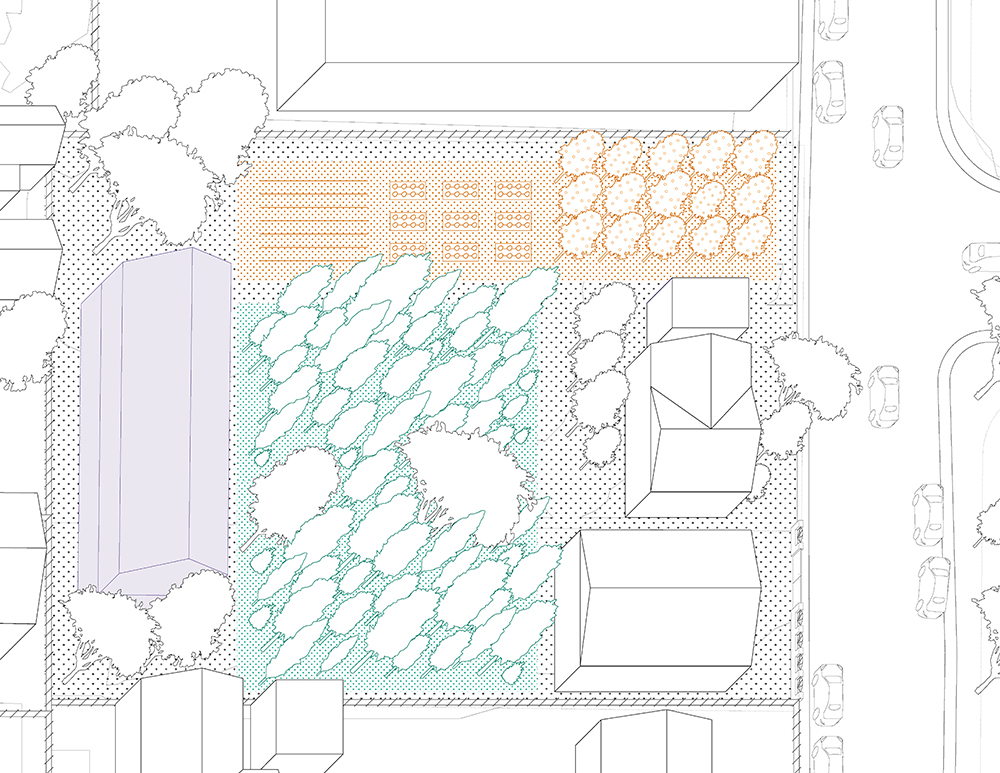
8. Finally, the mini-forest is expanded to continue the process of environmental remediation and eliminating the need for yard maintenance in the future.
The cumulative effect is a heterogeneous urban patchwork:
